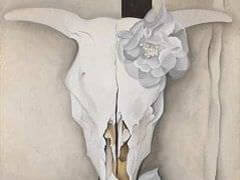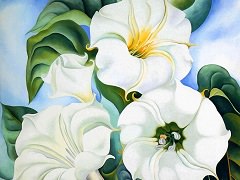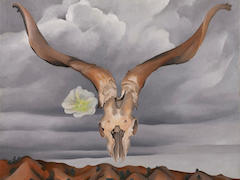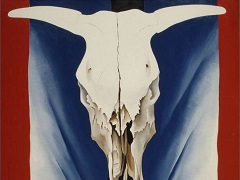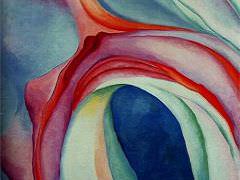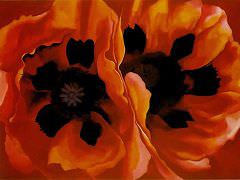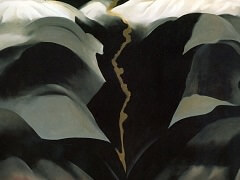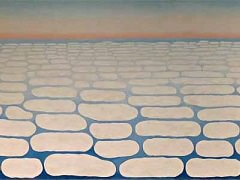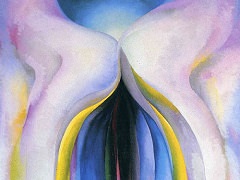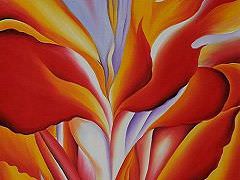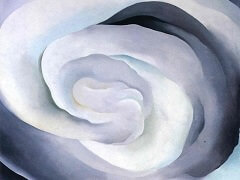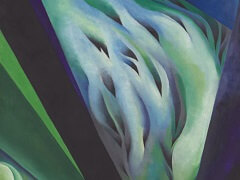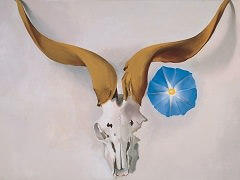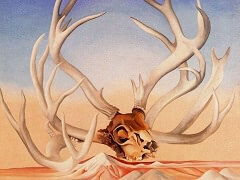Black Iris, 1926 by Georgia O'Keeffe
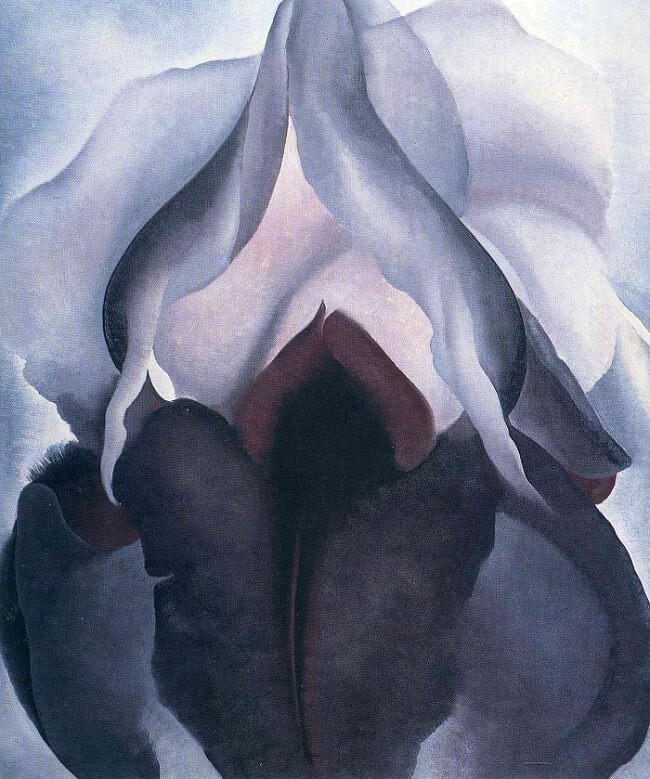
The iris is a familiar image in Western art, frequently used in Christian iconography; its swordlike leaves were especially employed as a symbol for Mary's suffering, a pictorial metaphor which might also have been familiar to O'Keeffe from her Catholic upbringing and her parochial schooling.
O'Keeffe's famous irises were an important preoccupation for many years; she favored the black iris, which she could only find at certain New York florists for about two weeks each spring. Unlike Impressionist's flower painting, such as Irises by Vincent van Gogh, O'Keeffe's enlargements and abstractions derived from the flower have often been explained in gynecological terms, almost clinical in their precision. Such explications, once the province of Freudian critics, have more recently been repeated in feminist interpretations of the flower. Linda Nochlin, for example, read Black Iris as a "morphological metaphor" for female genitalia, insisting that the connection is "immediate", "concrete", and "that the two meanings are almost interchangeable." In this merger of botany and anatomy, Nochlin found reflection of "the unity of the feminine and the natural order", a concept which enjoyed great vogue early in the last century.
O'Keeffe rejected the notion of her flowers as sexual metaphors - this is something she feels is created by the viewer who applies his own associations to the works, not hers. O'Keefe maintains:
Nobody sees a flower, really, it is so small. We haven't time - and to see takes time like to have a friend takes time. If I could paint the flower exactly as I see it no one would see what I see because I would paint it small like the flower is small. So I said to myself - I'll paint what I see - what the flower is to me but I'll paint it big and they will be surprised into taking time to look at it - I will make even busy New Yorkers take time to see what I see of flowers. I made you take time to look at what I saw and when you took time to really notice my flower you hung all your own associations with flowers on my flower and you write about my flower as if I think and see what you think and see of the flower - and I don't."


